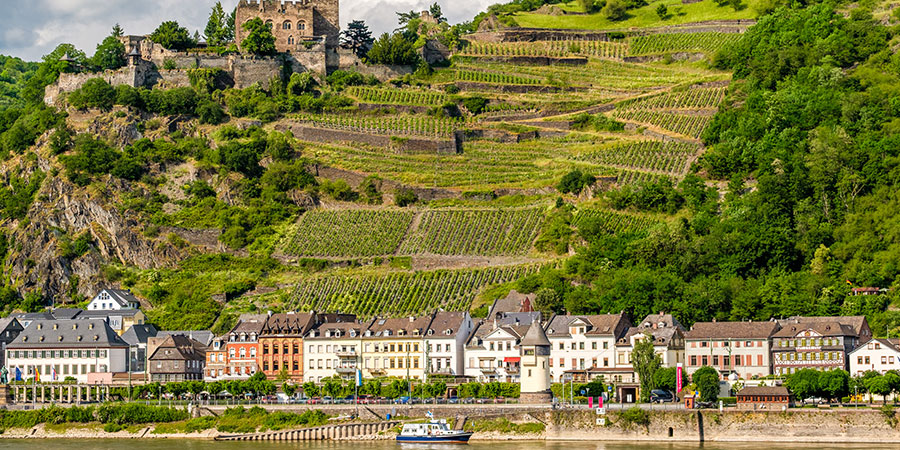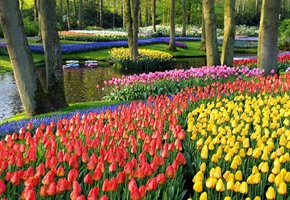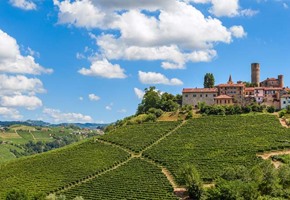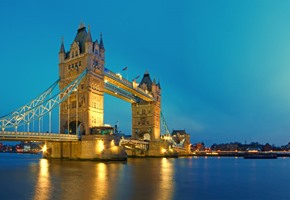The second on our series of holidays and hobbies, this time we head down the rabbit hole into the heady world of wine enthusiasts.
You heard it on the grapevine…the best places to visit if your hobby is wine.
Most of us enjoy a tipple or two or even three from time to time, but for many wine is more than a stress-reliever or social lubricant and you don't have to be a sommelier to want to be able to tell your Claret from your Chianti. Alcohol and holidays have long gone hand in hand, but once you're past the age of wanting to be seen publicly vomiting and your main aim is no longer to get as drunk as possible for as little as possible, but to savour and analyse the flavours, bouquet and body of your chosen glass of vino, then you may well be a full-blown oenophile. And to celebrate your new-found status, how about a holiday? We know some wonderful places…
1) France. Where to start? The French are renowned for their love of good food and even better wine to go with it, and there are dozens and dozens of wine producing destinations through the country; from the famous fizz of Champagne to the blood-red hue of an aged Burgundy. But for something a little different, we recommend the Alsace region. Specialising in white wines such as Riesling as well as the odd rosé and pinot noir, many turn their nose up at this wine-producing destination because they stick too reverently to their 'red or dead' mentalities, but that just means more for everyone else! Travel along the Route des Vins (which lies between the towns of Strasbourg and Colmar) and you'll be able to sample the very best the region has to offer.
2) Italy. Another big-hitter in the world of wine, though for most Italian wine starts and ends with Tuscan vineyards and the pop or Prosecco corks but never fear - we're here to tell you different! Another underrated European gem in our humble opinion, has to be the Langhe region, specifically the village of Barolo which lies hidden amongst the undulating vineyards of Piedmont and is the source of its eponymous red wine, deliciously rich and made from the otherworldly Nebbiolo grape which thrives in this corner of north west Italy.
3) Portugal. It's not all about the Port here you know, though that is of course a big part of the wine scene seeing as it can only be made and named as such within the 557-mile radius that makes up the Douro Valley. Port is taken very seriously in Portugal; no whipping a bottle out of the cupboard only at Christmastime here! Instead it's treated with a reverence that's understandable when you realise how much prestige and money it brings to the country through tourism and exports. There's even a time-honoured way to open a seriously old bottle whose cork may be compromised that involves a pair of very hot tongs and a bucket of ice cold water. The country also produces a lesser-known, but equally as delightful drink called Vinho Verde, or green wine, so named not because of its colour but because of the young grapes used in its creation and which boasts a flavour that is most likened to a flat sparkling white wine. That may not sound inspiring but it really is an unusual drink to experience, and one well-worth tasting for the first time at its source.
4) Argentina. Home to some truly impressive New World wines, over the last few years Argentina has overtaken neighbour Chile in the South American wine producing stakes, and talking of steaks…you'll find no better accompaniment to a rare fillet than a ruby-red glass of Malbec, a grape that produces a full-bodied drink with notes of cherries and blueberries. It's not just robust reds the country is known for though, with its white wines made from the Torrontés grape (that only grows in Argentina) growing in popularity, and with floral overtones and a citrusy kick, it's not hard to see the appeal.
5) Germany. The Rhinelands of west Germany have been producing white wines, the most popular of which comes from the Riesling grape variety (characterised by a sweet yet crisp fruity flavour), since the Roman era. This is due to the near perfect conditions the steep, fertile, river banks offer, and every year this region produces about 1.2 billion bottles, making it the 8th largest wine-producing country in the world. It's not without its controversy though, as many aficionados consider Rhineland wines inferior due to their mass-market popularity and sweetness. After a visit to one of the family-run wineries south of Cologne however, where you can sample everything from the driest white in their cellar to the most saccharine, you're bound to turn your nose up to such snobbery!






